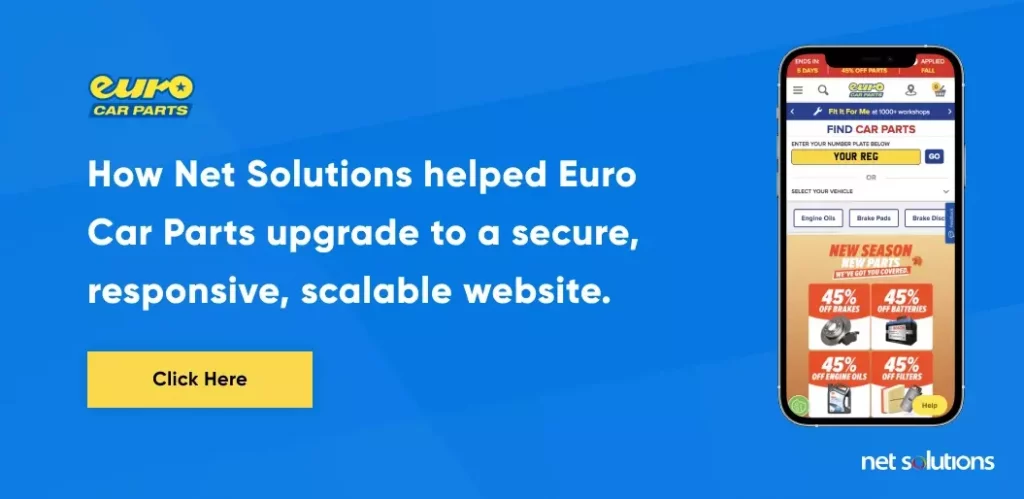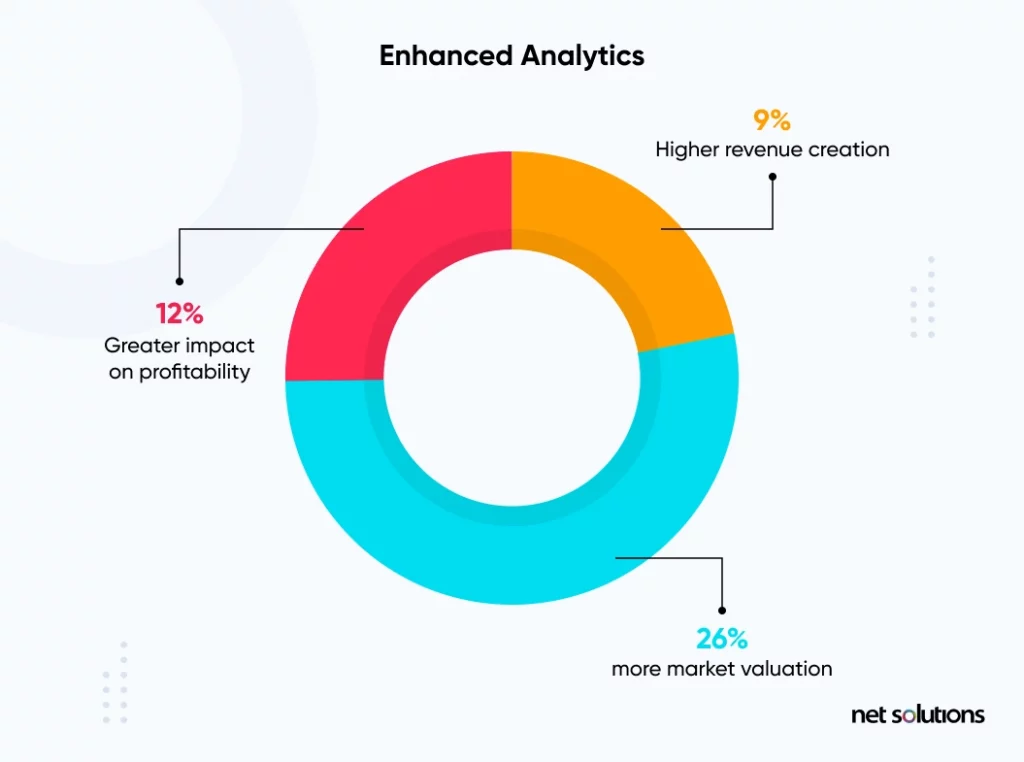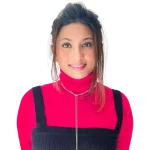The US B2B eCommerce sales are projected to hit $1.840 trillion, up 9.4% from $1.682 trillion in 2022 and 19.7% from $1.537 trillion in 2021.– Forrester Research
B2B buyers are one of the most profitable yet demanding customers you’ll ever encounter. They come prepared and start with online research instead of heading directly to a particular seller. These buyers have a clear knowledge and idea of what they want to buy.
To convert these customers, you need a lot more than just a brand name. You need a platform where you can effectively convey your offerings, present social proof, and showcase why you’re the one from a myriad of options they have. You need an eCommerce website.
“Old marketing was dictation. New marketing is communication. Change from Convince and Convert to Converse and Convert!” – Ted Rubin
Is the only reason why every eCommerce seller should choose a B2B eCommerce website? There are a lot more:

We respect your privacy. Your information is safe.

We respect your privacy. Your information is safe.
7 Reasons You Must Invest in a B2B eCommerce Website
1. You can reach potential customers anytime, anywhere
93% of B2B buyers begin their buying process using Internet search.– Marketo
In the 80s and 90s, B2B buyers heavily relied on their networks to purchase something. They spoke to friends and colleagues and asked for referrals. Word of mouth and brand awareness played a critical role in the purchasing process.
However, things have significantly changed these days and Google has become the go-to place for information. It means the chances of potential customers finding your business are bleak if you don’t have a website.
Also, you can easily target potential customers globally anytime, anywhere with a B2B eCommerce website. It gives you access to new stores, geographies, product catalogs, and divisions – making B2B selling easier than ever before.
If you’re running a B2B business and think that your prospective customers aren’t searching you on Google, think again.
2. Fast-track Order Fulfillment with Cloud-Based eCommerce Systems
Selling online offers B2B sellers an opportunity to fasten their order fulfillment processes. How? It offers a modern cloud-based eCommerce platform for order processing and tracking inventory.
Today, cloud-based eCommerce platforms have built-in order management systems. Modern Order Management Systems (OMS) treat the entire supply chain as an interrelated ecosystem that permits suppliers to automate their internal processes from order to satisfaction.
OMS can easily integrate with other digital catalog software that reduces errors in order placement and improves inventory tracking. This, ultimately, enhances customer relationships by offering timely service and order delivery. B2B sellers can now promise a quick, accurate, and transparent delivery to B2B customers.
For instance, QuickBooks Commerce is an amazing cloud-based commerce system that allows B2B eCommerce businesses and wholesalers to manage inventory, orders, customers, and an extensive supply chain ecosystem from a single integrated platform.
Here’s How We Launched a Multi-Channel B2B2C eCommerce Platform for UK’s Largest Car Part Supplier
Net Solutions helps you deliver robust and scalable B2B eCommerce development services to your customers. We help businesses focus on digital transformation to ensure better customer experiences with high-performing websites.
We collaborated with Euro Car Parts (ECP) to build a B2B eCommerce platform . Founded in 1978, ECP is the UK’s largest car parts supplier. Our experts helped them build a platform that enhanced the digital experience for their customers and delivered faster supply chain logistics, ultimately leading to an increase in conversion rates and sales.
Read more about the opportunity and challenges here .

3. Enhance Analytics for Better Insights
Combining business software like – ERP, PIM, Procurement, CRM, etc., gives you a comprehensive perspective on all business forms. This helps get an instant insight into all the bottlenecks and arrive at significant business decisions to manage your activities swiftly.

As depicted in the above image, adopters of digital transformation achieve 9% higher revenue creation, 26% more prominent effect on profitability, and 12% more market valuation.
Following are the 4 key factors that can help improve analytics through branding:
- Consistent communication with clients through social media channels and keeping them updated with unique content.
- Use of engaging content, characters, graphics, and online ordering gateways to enhance user experience.
- Optimizing your B2B eCommerce websites for mobile.
- Creating your brand story that not just sells your product to the customers but also strengthens the relationship with existing buyers.
4. Offer Customer-Centric Support
75% of customers will spend more to buy from a company that offers a good customer experience.– Zendesk
This implies that businesses have an opportunity to enhance their revenue by offering a delightful experience. And, if you skip this, here’s what your customers are likely to experience.
Nowadays, users prefer researching products and services prior to purchasing them. B2B eCommerce websites offer customers access to self-service portals with reviews, product descriptions, shipping and handling information, order history, and delivery tracking information.
By availing of the personalization capabilities of B2B eCommerce platforms, store owners can personalize the storefronts and display the products as per customers’ demand. Also, the customer-facing teams gain access to data of every customer and their transactions. This offers completely personalized and customer-centric support to customers.
With features such as rich content, intuitive design, and interactive functionality, B2B eCommerce websites ensure a remarkable customer experience for retail customers and B2B buyers.
5. Retain the Repeat Customers
Attracting new customers and keeping the existing ones happy is something every business tries to focus on. Also, it is equally important to maintain optimum revenue from new and repeat customers to retain business growth and reach sales goals.
93% of customers are likely to make repeat purchases with companies that offer excellent customer service.– HubSpot Research

So, why not make it easy and progressively consistent for repeat customers to purchase from you?
Create a customer profile based on Customer Lifetime Value (CLV) and Net Promoter Score (NPV). Keep track of repeat purchases and ongoing customer activity. This will help you identify customers’ requirements and problem areas. Once you start addressing them, the churn rate reduces, and the sale increases, generating higher revenue. And, chances are your business becomes their most preferred supplier.
With higher repeat customers, businesses can explore the opportunity of offering a continuous subscription-like service. An eCommerce platform permits them to buy and re-buy the products and services swiftly without the additional footstep of connecting with a representative. This spares time for you as well as your customers.
6. Improved Sales Engagement
A b2b eCommerce website offers your sales team better visibility into orders, pricing, and customer history even when they’re traveling or working remotely. This way, they don’t have to confine themselves to the office cabin to work and they can even take calls on the go.
Also, with the automated inventory management and order tracking feature of an eCommerce website, you can synchronize data across multiple eCommerce channels and accurately update your customers – leading to transparency, faster delivery, and improved customer experience. A popular example is the online catering platform CaterSpot. Tech giants like Google, Uber, and LinkedIn have partnered with it because of its multi-channel tracking features and high level of transparency.
7. Staying Ahead of Buying Trends
Customers are digitally savvy these days. They receive hundreds of emails in their inbox, and according to MailChimp open only 21.23% of them. What are the chances they will open yours? Even if they open your email, what would make them choose you over your competition?
A B2B eCommerce website can be your chance to showcase your expertise, way of working, and past successful collaboration with potential buyers. It would offer them strong social proof and increase the chances of these buyers considering you for business. No need to go through the long route of emails, calls, and faxes. If your eCommerce website is good enough, a client can even buy from you in a couple of seconds. And then your sales team can focus on finding new customers.
Frequently Asked Questions
B2B clients make high-volume and high-value purchases. Since these transactions are traditionally higher in value, B2B clients expend more time and resources researching and calculating the value your product will add to their business. Hence, they’re willing to spend more.
Depending on your business needs, a B2B website can cost anywhere from $15000 to $80000. Besides, you also need to spare some money on maintenance and support costs.
B2B eCommerce makes money in the following ways:
- Transaction fees – money you pay every time you buy a product or service on a B2B eCommerce website.
- Advertising – money you charge for running ads on other websites.
- Listing fees – money other websites have to pay to list their products on your website.
- Know your existing customers to acquire new ones.
- Identify your ideal customer’s problems and how you can offer them the best solution.
- Learn from your competitors. They can teach you what even the best coaches and training can’t.
- Leverage social media as it has tremendous potential.



